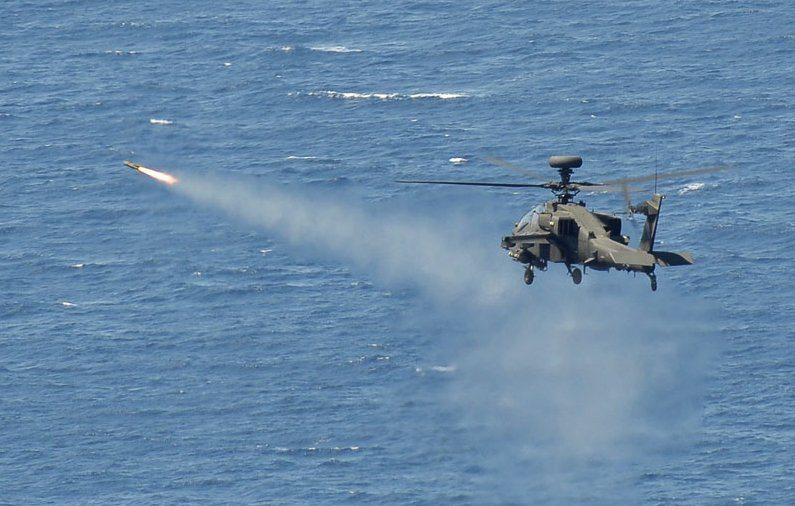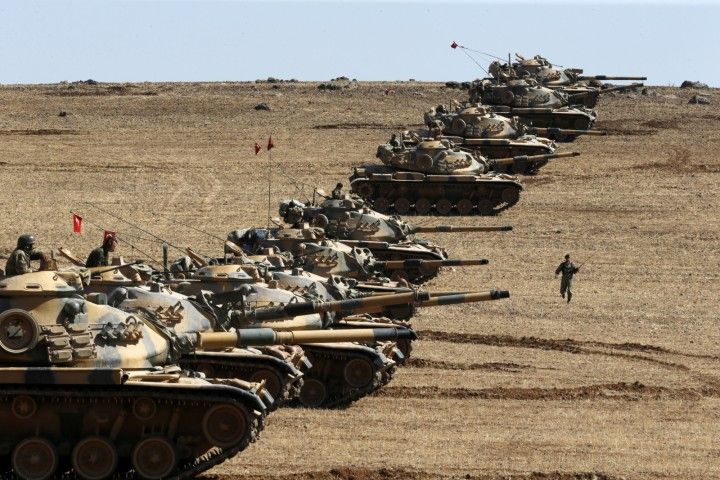The US-led air campaign in Iraq and Syria is proving a boon to weapons makers, sending their share prices soaring and bolstering political support for higher defense spending.
The open-ended air war against the Islamic State group will mean billions in sales for bombs and missiles, spare parts for warplanes and a stronger case for funding sophisticated aircraft, including fighter jets, spy planes and refueling tankers, analysts said.
“It’s the perfect war from a defense contracting standpoint and a defense spending standpoint,” Richard Aboulafia, vice president at the Teal Group consultancy, told AFP.
Stock prices for the big defense contractors have been at record highs since President Barack Obama first sent military “advisers” to Iraq in June and continued to rise since air strikes started in August.
In the past three months, shares for Lockheed Martin are up 9.3 percent, shares for Raytheon rose 3.8 percent, Northrup Grumman’s shares are up 3.8 percent and General Dynamic’s share price jumped 4.3 percent.
During the same period, Standard and Poor’s index declined 2.2 percent.
Lockheed Martin makes the Hellfire missiles used by Reaper drones and by Iraqi government aircraft, and Washington has rushed the delivery of hundreds of the missiles to Baghdad.
Only days after the United States extended the bombing raids into Syria last month, Raytheon won a $251 million contract to supply the US Navy with more Tomahawk cruise missiles.
On September 23, the first day of the air strikes in Syria, US warships fired 47 Tomahawk missiles, each of which costs about $1.4 million.
Despite doubts about whether the air campaign will halt the advance of the IS militants, investor sentiment remains bullish on the defense companies, analysts said.
The big firms, including BAE Systems, “are all are performing better than any analyst would have predicted three years ago,” said Loren Thompson of the Lexington Institute, which has ties to the industry.
The war promises to generate more business not just from US government contracts but other countries in a growing coalition, including European and Arab states, who will be keen to replace munitions and invest in their air forces, analysts said.
Apart from fighter jets, the air campaign is expected to boost the appetite for aerial refueling tankers, surveillance aircraft such as the U-2 and P-8 spy planes, and robotic drones, which have proved crucial to the current operation. Private security contractors, which profited heavily from the US presence in Iraq and Afghanistan, also are optimistic the conflict will produce new contracts to advise Iraqi troops.
Only a year ago, both the defense industry and the Pentagon were bracing for a steady decline in American military spending, with US forces out of Iraq and scaling back in Afghanistan.
As automatic budget cuts forced difficult decisions on commanders after a decade of unfettered funding, major aerospace and weapons companies laid off employees to prepare for a more austere era.
But the air campaign and the threat posed by the Islamic State group — as well as Russia’s intervention in Ukraine — has helped shift perceptions in Washington and Wall Street, experts said.
“The consensus seems to be moving towards higher defense spending in response to a dangerous environment out there,” Aboulafia said.
Combined with Russia’s resurgence, the IS onslaught in Iraq and Syria is overturning assumptions about the national security threats facing the United States and how its military should be deployed and equipped.
Obama, who once spoke of focusing on nation-building at home, has approved the deployment 1,600 troops to Iraq and warned Americans to expect a long war that could last at least three years.
More than new spending on munitions, the most significant effect of the war is political, with few US lawmakers now urging big cuts to the defense budget, Aboulafia said.
The tea party faction of the Republican party has toned down its skepticism of foreign military intervention amid solid public backing of the air war, he said.
To open the way for major increases in military spending, however, Congress would have to agree to scrap a law that requires automatic budget cuts — an issue that has confounded lawmakers so far.
US military spending came to roughly $580 billion for 2014, down from a few years ago but still massive, larger than the combined defense budgets of the next eight largest nations.
During the height of the war in Afghanistan, lawmakers questioned the need for large fleets of expensive warplanes or other hi-tech weapons.
But the Pentagon now will have a strong argument for funding big-ticket items.
“It’s awfully hard to say no when you’re at war,” Thompson said.











